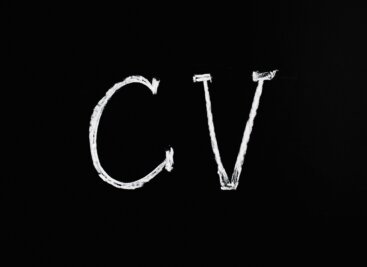Cost Per Hire is a measure frequently used by companies seeking to control their costs. But companies should also be focussing on ROI.
Does your company focus on this metric? If so you may be missing out on the best talent. A more relevant objective is “How can you source the best talent in the shortest timeframe with maximum return on investment”.
Why do companies measure Cost Per Hire?
The most obvious explanation is that the calculation is simple to understand:
![]()
The problem is, simplicity is really its only virtue. The calculation does not take into account the length of time it takes to fill the position or the quality of the hire. The metric is widely used, but that does not mean it provides any useful data. It may in fact be detrimental to the recruitment process.
If a company wants to have an effective talent management strategy it needs to focus on the more important business and revenue impacts that efficient recruiting can provide.
The problems with measuring Cost Per Hire
1. In-house recruitment is not always best
If cost control is the primary objective, measuring Cost Per Hire will encourage a firm to do much or all of its own recruitment. In-house costs are fixed therefore the greater the number of hires, the lower the cost per hire. Prima facie this sounds like a good result. However, it may turn out to be a riskier and less cost-effective solution for a number of reasons. In-house recruitment may offer the cheapest option in absolute terms above a certain recruitment volume but is constrained by both the capability and capacity of the in-house recruiter.
- In-house recruiters are the face of a company. They must effectively represent the company brand and culture which is of critical importance to ensure the attraction of the best candidates. This can sometimes be difficult if the firm recruiting is a relative newcomer, or operating in a niche market. Our experience is that sometimes in the bid to control costs firms don’t consider the need for the recruiter to represent its brand in a quality or credible manner.
- They need in-depth knowledge of the relevant market. This knowledge is accumulated with time and experience. In-house recruiters can be excellent but can also lack the experience and expertise to find and attract the best candidates, especially in specialist markets.
- They must provide a great candidate experience. This is often helped by the implementation of an effective and efficient recruitment process. In practice, this can be a challenge and even basic administration of the application process eludes many companies. An inefficiently run process may scare away the best candidates and cause considerable damage to the brand.
- It is not scalable. If there is a peak in demand for hires the recruiter can’t cope and will inevitably focus on the easier to fill jobs which might not be the ones that will add most value or be business critical.
- There has to be added value by pre-screening applicants effectively. If in-house recruiters are not able to do so then the risk is that:
- The firm rejects good talent
- It wastes staff time, including senior management
- The recruitment process is drawn out because managers are swamped with irrelevant CVs
If the in-house recruitment resource is compromised for whatever reason, in the worst-case scenario, the company takes longer to find a suitable candidate and may still require a recruitment agency.
2. Some factors affecting the Cost Per Hire calculation are outside a company’s control.
Cost per hire is a function of the volume of hiring, and a mix of the grade of staff hired. The metric is too crude to be applied across all staff levels and a temporary decrease (or increase) in any area of staff recruitment will give rise to a variance. There may be a particular shortage of talent at a specific level or in a particular sector which will skew the calculation.
3. It drives the wrong behaviours
A focus on reducing cost and a requirement to remain in the budget will ensure that effort is focussed on high volumes of easy to attract candidates in easy to fill roles regardless of the real value to the business. Our direct experience is that employers apply different criteria to direct and “free” applicants who may on occasions have backgrounds markedly inferior to the criteria given to agencies. Inescapably these are often NOT good hires. While it is understandable that an agency fee is only justified for finding a good quality candidate or hard to find skills, the reverse logic should never apply!
4. The calculation fails to take account of a number of opportunity costs:
- The time it takes to hire is often ignored as a cost but in reality, it forms a big overhead. Assuming the recruitment is reactive, the role that is being advertised is vacant. Consequently, for the duration of the time that you are recruiting, that particular job isn’t being done or is being done as part of someone else’s role or responsibilities. Or by using an expensive Associate. Hiring times can be longer for in-house recruitment campaigns than they are when using a recruitment agency. This is due mainly to the difference in access to suitable candidates. The practical effect is that either a client project is under-resourced (i.e. there could be more staff on the project and therefore more £££) or the project is staffed with Associates on much lower margins and therefore a less profitable outcome.
- Calculating the cost of recruiting in isolation often has the net effect of forcing recruiters to primarily worry about the cost of hiring even though the business impacts that the new hire produces may be very many times higher.
- The formula used by many recruiting functions excludes the cost of the hiring manager’s time. Referral hires never include the cost of the referring employee’s time. Almost all cost of hire calculations fail to include the cost of bad hires, retention rates of hires, the lack of diversity of hires, and the need to terminate bad hires.
- Not all businesses have the time or resources to recruit effectively which means their campaign may not have the desired impact and therefore not attract enough of the right people for the role. This may result in hiring a sub-optimal candidate, who will not generate as much revenue.
- Recruiting the wrong person means a high cost of failure. If the new hire cannot do their job effectively, or as well as the person they replaced, it means wasted time in training or replacement. The cost has been estimated at many times that of an equivalent agency fee.
A better way to view recruitment costs and maximise Return on Investment
- Don’t just view recruitment as an overhead. In other parts of the business, (front office roles) costs are compared to the value of the output. The most strategic and widely used metric of Return on Investment (ROI) compares money invested with the return. By applying a ROI approach to recruitment, firms will compare the cost of investing in talent acquisition with the returns (fees) that these hires produce. Without also looking at revenue generation from hires, constraining or reducing recruiting costs may actually cost the firm money.
- Consider a hybrid approach to recruitment: use in-house AND external recruiters. One or other may be the best option depending on circumstances, so use both.
- External recruiters may seem expensive, but may only charge a fee when they find a suitable candidate. Take advantage of their network and experience to recruit senior talent or individuals with specialist skills. Calculating a positive ROI in such a situation will provide reassurance that expenditure on recruitment agency fees will contribute to the profitability of the business.
By all means, calculate Cost per Hire, but ensure you include ALL relevant costs and view this metric as only part of the overall talent acquisition picture.
To find out how Prism Executive Recruitment can help your company find exceptional talent, please visit our Recruitment Solutions page or contact Chris Sale, Managing Director.


